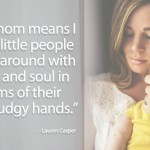 Suzanne Wind
Suzanne Wind
Award-winning Author | Mom
Visit Suzanne’s website, Facebook, or Twitter
My parents always taught me to be myself in every situation. We moved a lot when I was growing up, so being myself in a new country and new school wasn’t always accepted by my peers.
I was THAT kid – the kid who couldn’t speak the language properly and who wore the “strange” silver shoes. My customs and clothing had others pointing fingers and whispering.
Being the new kid was scary but it also taught me the importance of acceptance. I saw it all – the good, the bad and the ugly. Some children were especially wonderful and took me under their wing. Others laughed at my clothes, my hairstyle, and even my accent. Some were especially mean and excluded me from activities. To all those children, families, and strangers, I say thank you. Thank you for reminding me not to judge or be mean to anyone and to always appreciate differences.
Today as a mother of three, I am determined to prepare my kids for a diverse world and teach them to celebrate differences. It is our job to show them how to be kind and considerate to everyone. How do we begin? We can raise children to respect and value people regardless of the differences between us. Teaching acceptance may be easier than you think!
How to Give Our Children the Gift of Acceptance
Model Acceptance and Tolerance – Be the first person or family to try to help someone who looks like they feel out of place. Encourage your child to have many different friends from different cultures and interests.
Walk the Walk- Create opportunities for your children to interact and make friends with people who are different than them. A powerful lesson is to ask them to imagine themselves in someone else’s shoes. Start with How would you feel if you were the new kid? Then ask How could others act to make you feel more comfortable? That second question is what helps the acceptance piece to stay in their hearts.
Respond to Curiosity – If your child is staring at someone because they are different, you can observe and respond to their curiosity. For example, if they stare at someone in a wheel chair, you can say, “He has a wheel chair to help him get around. You’re lucky to be able to walk, but I bet he can do pretty cool things in a wheelchair.” A lack of response may mean that it is unacceptable. A simple discussion develops sensitivity to the situation.
Reward Acts of Kindness – Helping the new kid. Including someone in a conversation. Cheering someone up when they feel sad. Always recognize small acts of kindness that value people.
We cannot always protect our children from rejection, exclusion, and feeling unaccepted by the world. But we can give our children the tools to feel loved and secure enough to celebrate and value differences. Teaching them to play the game of life with grace, confidence, character, integrity, and empathy!
This post was originally posted on the now-defunct Mom’s Choice Matters blog on 4/20/15.
Suzanne Wind is the award-winning author of The SMART Playbook. She is a mom with a mission! Her passion is to empower parents to teach the next generation social skills that fit a modern world and are the key to their future success.
Before kids, she was an international marketing executive in New York City. Suzanne has a multi-cultural background, having been raised in six countries and being introduced to four languages.
Suzanne credits her career and living overseas taught her the importance of using your best social skills, whatever the environment. Although customs may change from country to country, manners is a universal language.
She lives in Connecticut with her husband and three children.
Learn more about Suzanne and The SMART Playbook by visiting www.thesmartplaybook.com. Join Suzanne on Facebook and/or Twitter.
View all posts by Suzanne Wind here.






6 Comments on “What Being THAT Kid Taught Me About Acceptance”
Thanks for sharing,our kids are what we teach them!
We couldn’t agree more!
Very interesting….learnt a lot…..kids can be cruel.!
This is a great article. I try to work on this with my daughters. The tips are very helpful
Such a great article to read, very informative .
Thanks for reading, Sherry! Glad you liked it.